B2C tutors have started to see more pre-teens on the Fluentify system. If you’re not sure about what to teach young learners, check out these games and picture activities which are designed to be both fun and serve an educational purpose.
Thanks to all the tutors on the Slack group #fluentify-for-kids who suggested sites and activities.
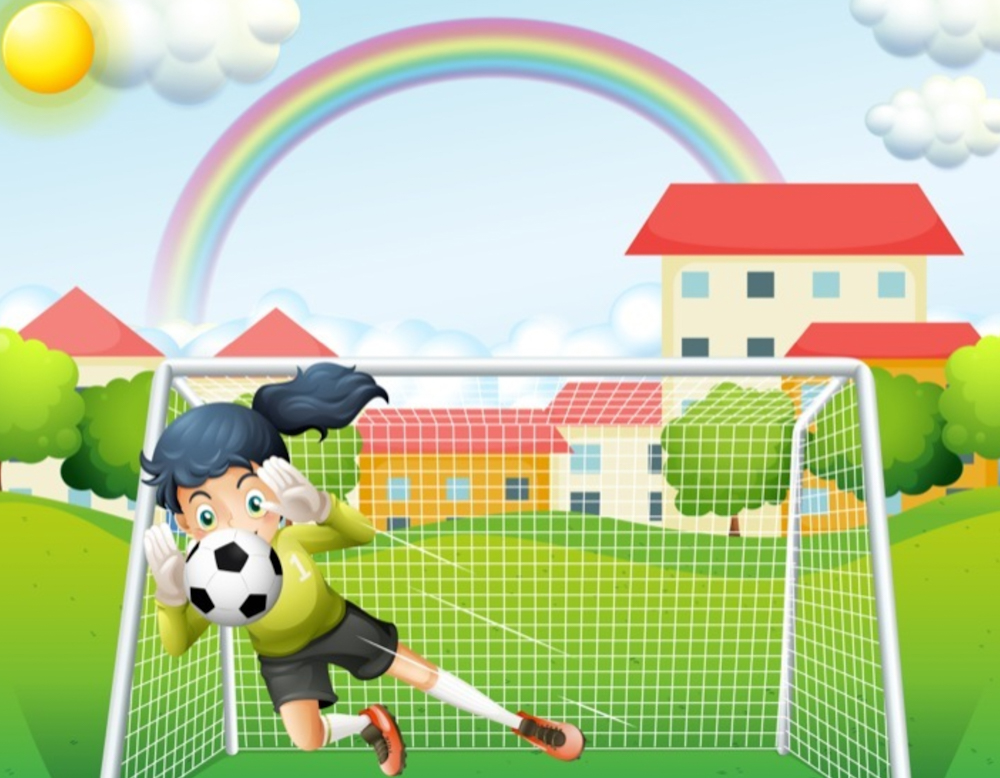
Important: The Young Learners’ speaking PLACEMENT test
Fluentify now uses a specially designed young learners and teens PLACEMENT test.
The test requires up to seven images. Please access the test and download the images below.
To access the PLACEMENT test, go to the HELP TAB on your dashboard. Type ‘Young learners’ placement test’ and you will find the Google Doc link.
Download placement test images
First lesson: School equipment
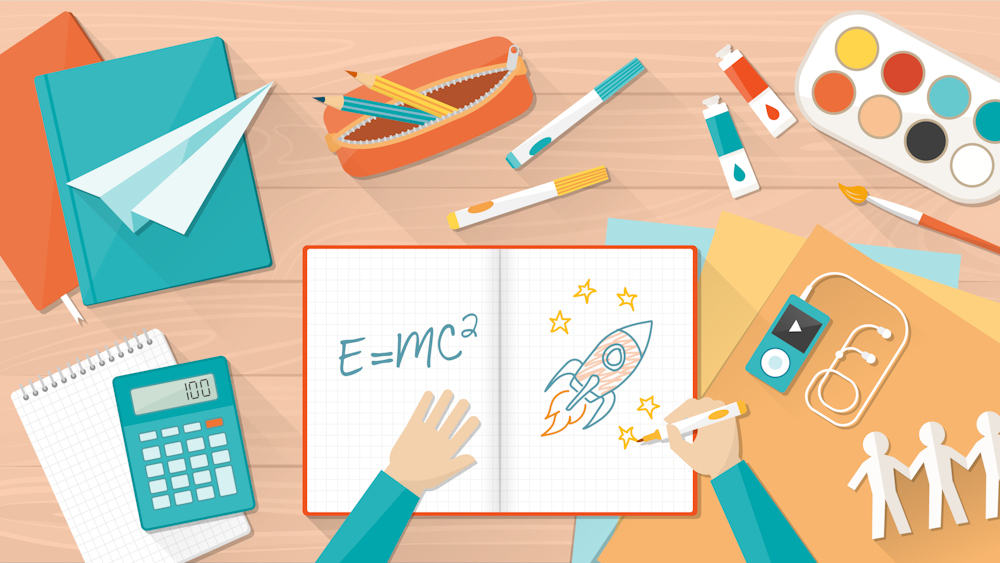
If your student knows zero English, follow these steps for their first lesson to introduce them to ‘to be’ verb.
Link: https://tutorblog.fluentify.com/a-beginner-students-first-lesson-to-be-verb/
Download school equipment worksheet
Game: Practise the days of the week with Adventure Man
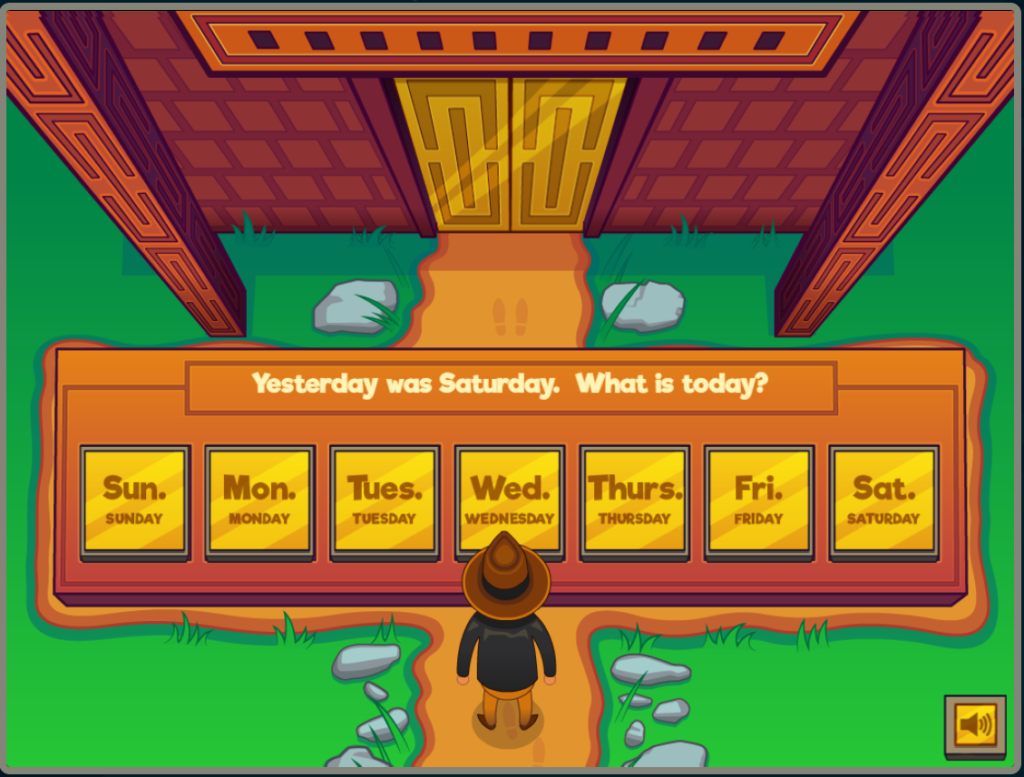
Help Adventure Man enter the temple by answering days of the week questions correctly. Post the link to the game in the chat for the child to complete for homework or in the lesson.
Duration: 3-5 minutes.
Vocabulary: Days of the week,yesterday, tomorrow, after, before
Link: https://www.abcya.com/games/days_of_the_week
Game: Practise the months of the year with Adventure Man
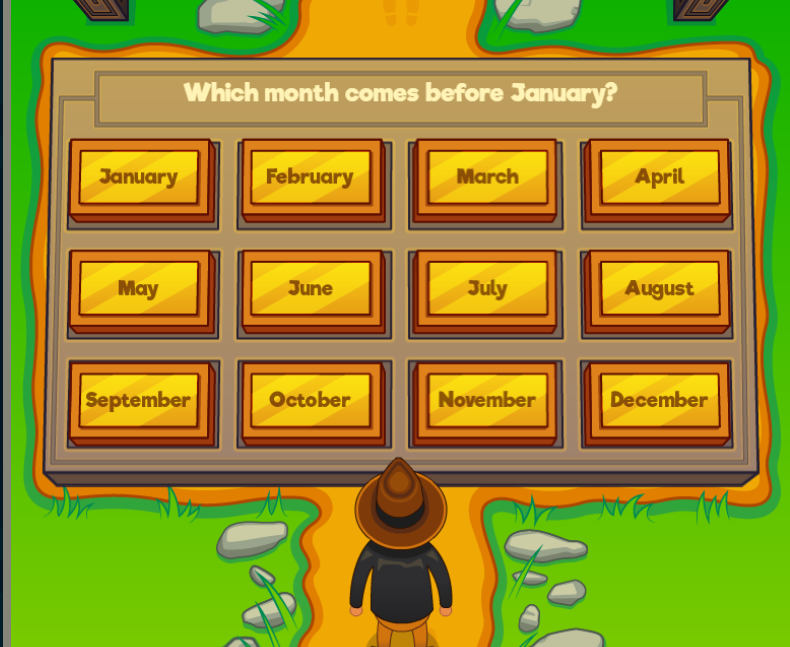
Help Adventure Man enter the temple by answering months of the year questions correctly. Post the link to the game in the chat for the child to complete for homework or in the lesson.
Duration: 3-5 minutes
Vocabulary: Months of year, after, before, last, next, ordinal numbers
Link: https://www.abcya.com/games/months_of_the_year
Game: learn the alphabet with Monster Mansion
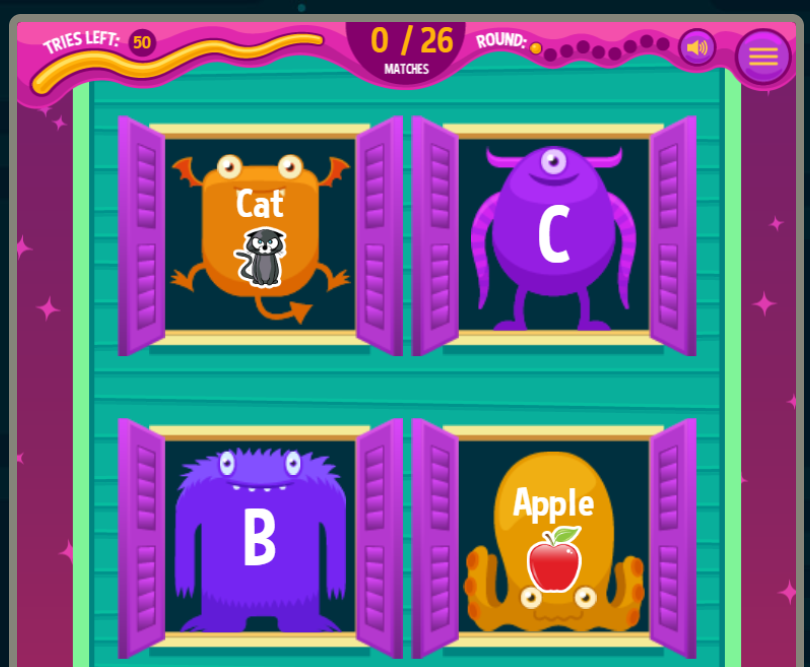
Match the monsters with the letter. This is a great homework activity to help your student memorise the alphabet.
Link: https://www.abcya.com/games/alphabet_matching_game
Vocabulary: Basic nouns and letter sounds
Dive deeper into the alphabet with this phonics chart
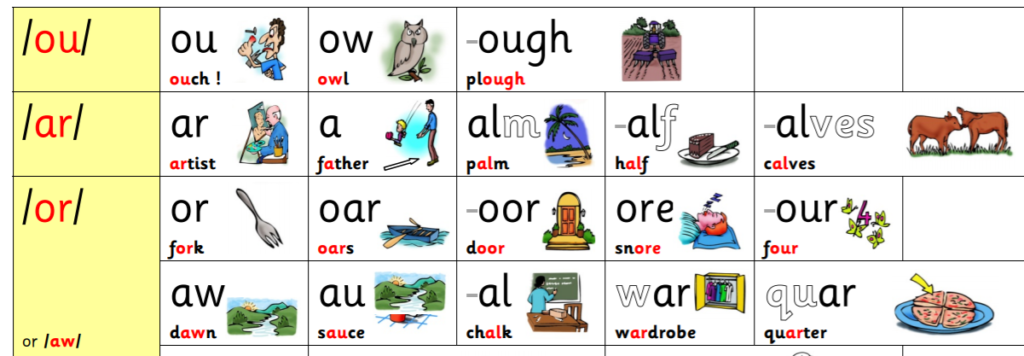
Help your students understand the different vowel sounds with this chart. Model the word and ask your student to repeat.
Download link: https://alphabeticcodecharts.com/Training_illustrated_The%20English%20Alphabetic%20Code.pdf
Activity: Practise English with these Cambridge sample tests
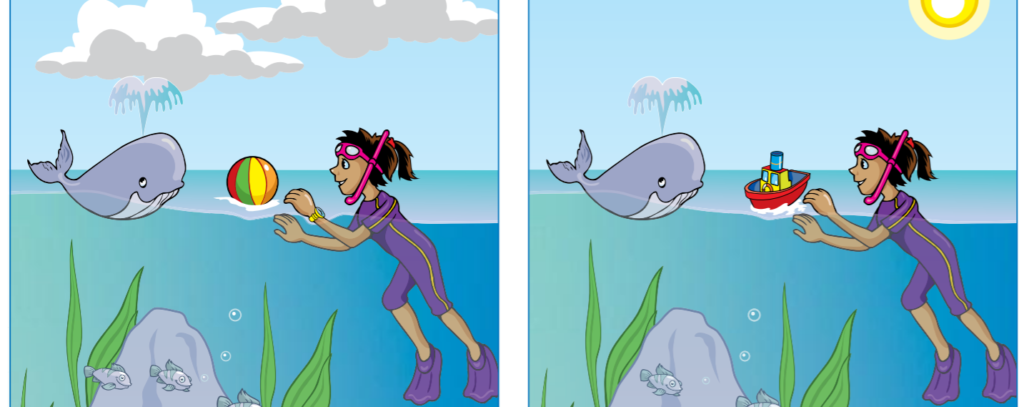
Introduce your young learner to the four disciplines of reading, writing, listening and speaking with these Cambridge English Young Mover sample tests.
Link: https://www.cambridgeenglish.org/exams-and-tests/starters/preparation/
Sample paper link: https://www.cambridgeenglish.org/Images/young-learners-sample-papers-2018-vol1.pdf
Activity: Practise telling the time
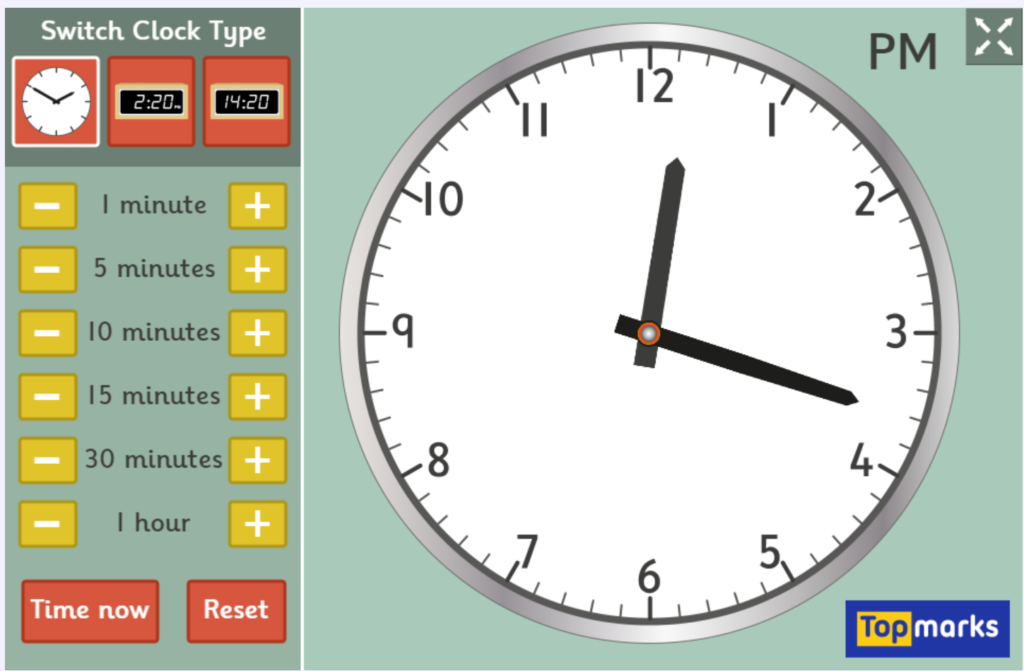
Practise the time with this interactive clock. Share your screen and ask your student to tell you the different times that you create on the clock.
Link: https://www.topmarks.co.uk/time/teaching-clock
Activity: Practise weather vocabulary and seasons

Practice the weather and seasons with these pictures.
Vocabulary: Sunny, warm, hot, dry, windy, rain, snow, cold, freezing, snowman, beach, swimming, flowers, to water flowers, leaves.
Download Seasons and Weather worksheet
Questions:
What is the girl doing in pictures one, two, three etc?
- What is the weather like in picture one, two, three etc?
- What is she wearing?
- What is your favourite season?
- Where do you usually go in summer?
- And in winter?
- What is the weather like today where you live? And in Australia?
- Put these weather types in order of your favourite:
- Rain
- Snow
- A windy day
- A cloudy day
- A sunny day
- Very hot
- Very cold
- Warm
- A thunderstorm
Activity: Practise sport and ability vocabulary
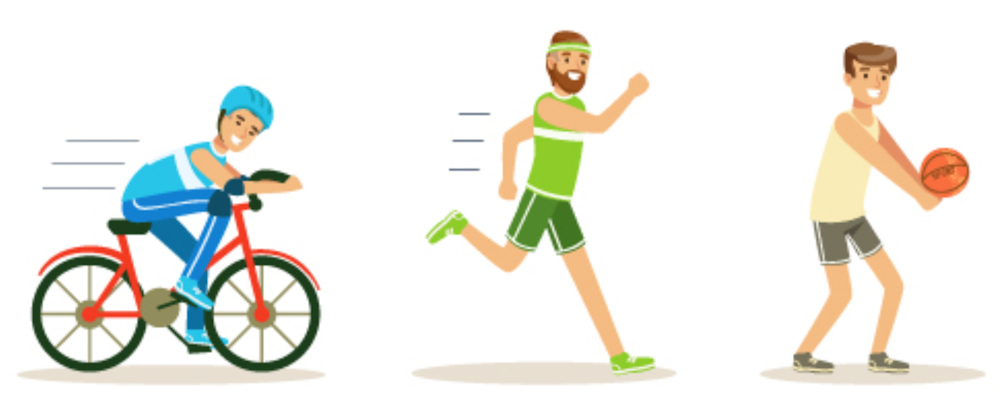
Practise sports’ vocabulary and ability phrases (‘can’) with these pictures.
Vocabulary: To fence, to play basketball, to dance, to do gymnastics, to go canoeing, to swim, to go swimming, to dive, to go skiing, to ice skate, to ride a bike, to run / to go running, to play volleyball, can, to be able to.
Download Sports and Ability worksheet
Questions
- Name these different sports
- Which of these sports can you do? Which of them can’t you do very well?
- Which sport do you prefer and why?
- Which of these sports do you do at school?
- How often do you do this sport?
- Which of these sports can your mother, father, brother or sister do?
- Who, in your family, is good at basketball? And dancing?
- Who is better at running, you or your brother/sister, mother/father?
- Who, in your family, is the best at….?
- Who, in your family, is the worst at….?
Activity: practise comparatives

Practice comparative adjectives with these pictures. Give your student an adjective and ask them to make a comparative sentence.
Tutor: Big
Student: The black dog is bigger than the white dog.
Download comparatives worksheet
Vocabulary
Dogs: Big, small, weak, strong, heavy, light.
Skiing and sitting: cold, hot, happy, sad, tired, energetic, excited, bored
Rich man, poor man: Rich, poor, happy, sad, tidy, untidy.
Game: Who’s who to practise appearance vocabulary

Practise appearances with this game of Who’s Who.
Vocabulary: Red, grey, blond, brown, black hair, a beard, a moustache, a goatee, to wear glasses, to have long hair, to have short hair, to have curly hair, to have straight hair, to have a ponytail, to have a bun, to have a bob, to be white, black, brown.
Download Who’s who
How to play Who’s who
- Share the worksheet with your student by attaching it in the chat or sharing your screen.
- The tutor selects a character, but doesn’t tell the student.
- The student asks ‘yes’ or ‘no’ questions to eliminate characters until there is only one logical conclusion.
For example:
Student: Is it a woman?
Tutor: Yes (this eliminates all the male characters)
Student: Does she have red hair?
Tutor: No.
Game: What’s in the bag? to practise questions and adjectives
Practise ‘to be’ and ‘do’ questions with the game ‘What’s in the bag?’
Vocabulary: Big/small, hard/soft, wet/dry, expensive/cheap, common/unusual, fun/boring, fast/slow, new/old. To use it for work, play, in the house, outside, for sport, to play music.
How to play What’s in the bag?
- The tutor places something in a small bag or pouch. They do not tell the student what it is.
- The student must guess what is in the bag using ‘yes’ or ‘no’ questions.
For example:
Student: Do you use it in the house?
Tutor: No
Student: Is it fast?
Tutor: Yes
Tip: Toys work well for this such as toy car. This allows the student to use things like fast, metal, drive, traffic, transport etc.
Activity: Practise food and drink vocabulary, plus ‘how much/ how many’
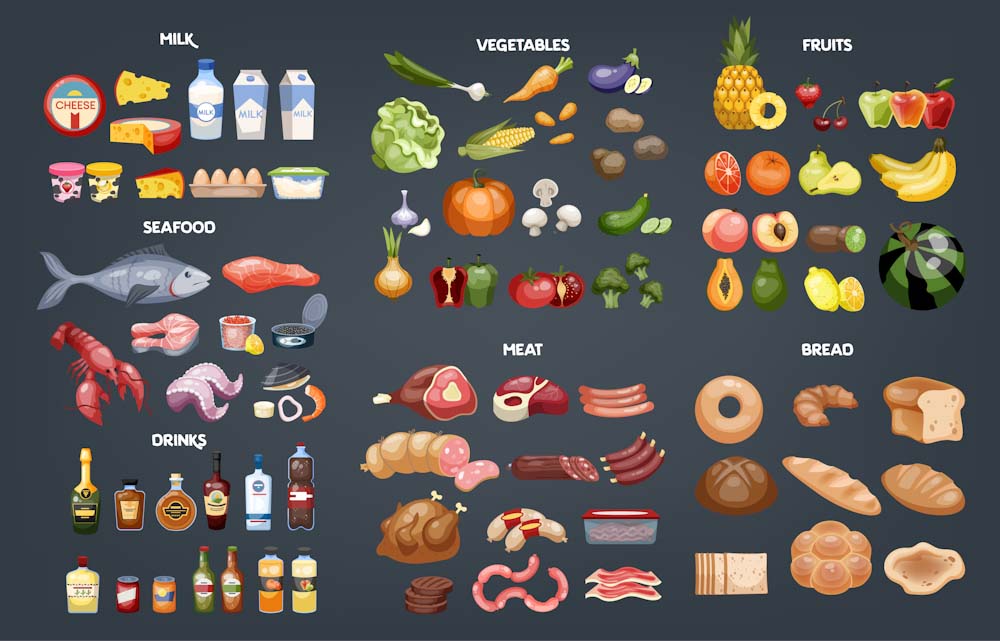
Practise food vocabulary, how much/ how many and countable and uncountable nouns with this worksheet.
Download Food and Drink worksheet
Questions
- What types of fruit, vegetables etc can you name in this picture?
- What is your favourite fruit?
- How many apples do you eat a week? And your brother? And me? Ask me.
- What do you have for breakfast?
- How much milk do you have for breakfast? A lot, quite a lot, a little/not much/
- What vegetables do you like eating? What do you hate eating? And your sister?
- How many slices of pizza do you eat a week? And me? Ask me?
- How much salad?
Activity: What are they wearing? To practise clothes and frequency vocabulary

Ask your student to name you the different clothes worn by people in this picture.
Download What are they wearing? worksheet
Questions
- What is person A wearing?
- Do you wear a uniform to school?
- What do you usually wear to school? And your brother /sister?
- What does your father usually wear to work?
- What is your favourite outfit in this picture?
- What is your favourite outfit that you wear often?
- How often do you wear a t-shirt? And me? Ask me.
- What is something in this picture that you would never wear and why?
- Tell me about something that your parents sometimes force you to wear?
Activity: Practise the present continuous with these scenes

Practise the present continuous with these scenes. First, ask your student a question that they can’t get wrong, by giving them two options, one of which is ridiculous. For example, for the first picture you could ask: ‘Is the boy on the right writing on the blackboard or reading a book?’
Your student will automatically answer, ‘he is writing on the blackboard.’ Do this a few times until they are comfortable with the complete ‘he is’ or ‘she is’ answer and then start throwing curve balls. For example:
Tutor: ‘Is the girl on the right wearing a hat??
Student: ‘No, she is not wearing a hat.’
Tutor: ‘What is she wearing?’
Download Scenes worksheet
Here are some suggested questions:
Picture one: Kids in a chemistry class
- Is the boy with the pink glasses smiling or crying?
- And you? And me?
- Is the girl next to him dancing?
- What is she doing?
- And you? And your brother?
- Is the boy with the orange glasses sitting or standing?
- And you?
- What is he wearing?
- Is he looking at you or the beaker? (‘cup’, if beaker is too difficult)
- What are you looking at? What are you listening to? And me?
- What is the boy with the orange glasses holding?
- And you? And me? And the girl in the picture?
- Is the girl with the green t-shirt wearing glasses?
- What is the boy with the blue t-shirt doing?
- And me? (drink a glass of water or another action)
Activity: Practise prepositions of place and furniture vocabulary
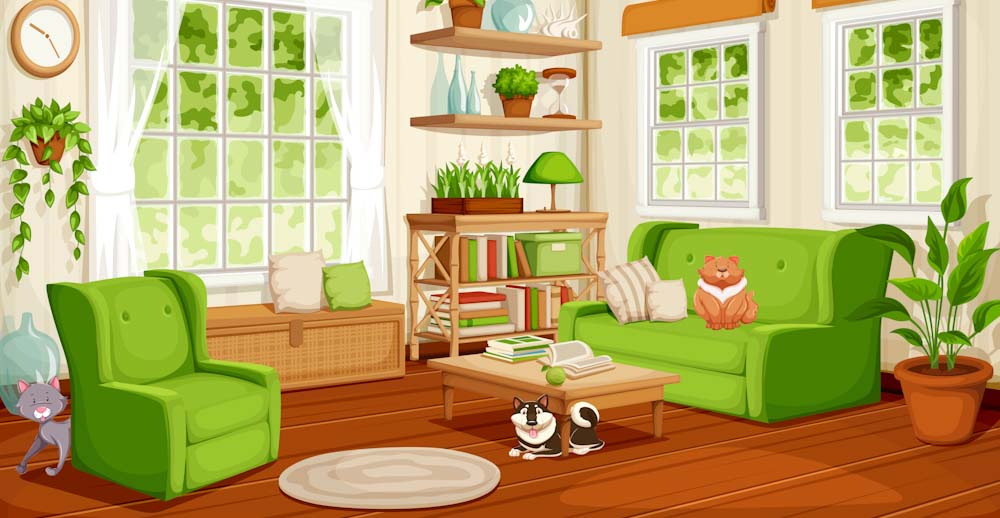
Practise ‘on’, ‘in’, ‘above’, ‘under’, ‘behind’, ‘in front of’, ‘next to’ and ‘between‘ with this worksheet.
Instructions
Using the shared screen function, point to an object. The student must tell you where it is using appropriate preposition of place. To practise negatives, ask your student things like, ‘is the dog on the sofa?’ and get them to answer, ‘no, it is not on the sofa, it is under the coffee table.’
This is also an excellent exercise to practise furniture vocabulary.
Download Prepositions of Place worksheet here
Activity: Interior of a house to practise house vocabulary

Practise rooms and furniture vocabulary with this picture worksheet.
Download House Interior worksheet
Final thoughts
What are your go-to activities for teaching children? Tell us about them in the comments section below and I’ll add them to the post. Happy teaching!
